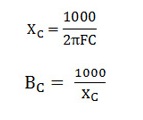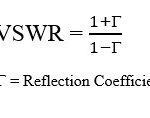What is LTE NR-DC?
Let me explain NR-DC in LTE and how it plays a significant role in modern mobile networks. As we have seen in previous articles, LTE (Long-Term Evolution) and NR (New Radio) are both key technologies in the mobile communication space. NR is the radio access technology used in 5G networks, while LTE has been widely used for 4G networks. But what happens when these two technologies work together? This is where NR-DC (New Radio- Dual Connectivity) comes into play.
NR-DC is a feature that allows a mobile device (also known as User Equipment or UE) to simultaneously connect to both an LTE network and an NR (5G) network. It enables dual connectivity, meaning your device can maintain active communication on both networks, thereby increasing overall bandwidth and improving performance.
Essentially, NR-DC allows your device to use the LTE network for certain services while tapping into the NR network for others, such as enhanced data rates or low-latency services. This simultaneous use of LTE and NR improves overall service reliability, coverage, and throughput, ensuring you get the best possible user experience, especially in areas with a mixed presence of 4G and 5G coverage.
So, why do we need NR-DC? With 5G rollouts happening worldwide, not all areas have full 5G coverage. NR-DC ensures that users in these areas can still take advantage of the performance improvements that 5G can offer while staying connected to the more widely available 4G LTE network. In a scenario where a mobile operator is in the process of transitioning from 4G to 5G, NR-DC helps maintain service continuity while improving network efficiency.
Here’s a breakdown of how NR-DC works:
- Dual Connectivity: The UE is connected to both the LTE eNB (evolved NodeB) and the 5G gNB (next-generation NodeB). Each network is responsible for different aspects of communication. The LTE network typically handles control signaling, while the NR network is used for enhanced data transmission.
- Dual Bearers: The UE can have dual bearers, one for LTE and another for NR, which means the device can transmit and receive data from both networks simultaneously, improving overall speed and reliability.
- Seamless Handover: NR-DC enables seamless transitions between LTE and NR networks, allowing the device to maintain a stable connection as it moves between areas with varying network coverage.
Now, let’s understand the benefits of NR-DC:
- Improved Data Speeds: By utilizing both LTE and NR simultaneously, NR-DC allows the UE to achieve higher data rates, especially in areas where 5G coverage is limited or unavailable.
- Network Efficiency: NR-DC optimizes network resource usage by offloading some traffic to LTE, ensuring that NR resources are used for high-priority or latency-sensitive applications.
- Better Coverage: In areas where only LTE is available, NR-DC ensures that the UE can still receive basic services, preventing coverage gaps and providing a more reliable connection.
In a previous article, we explored how LTE networks provide seamless connectivity in a 4G environment, and NR-DC enhances this experience by allowing devices to take advantage of the emerging 5G network without sacrificing LTE coverage. With NR-DC, mobile operators can ensure a smooth transition from 4G to 5G while maintaining a high-quality user experience across the network.


